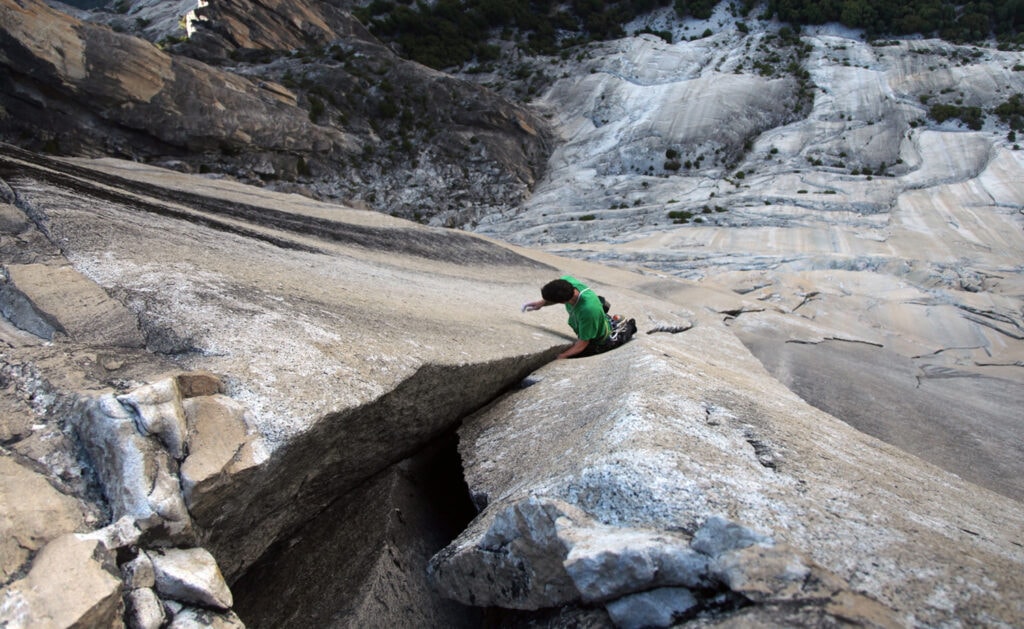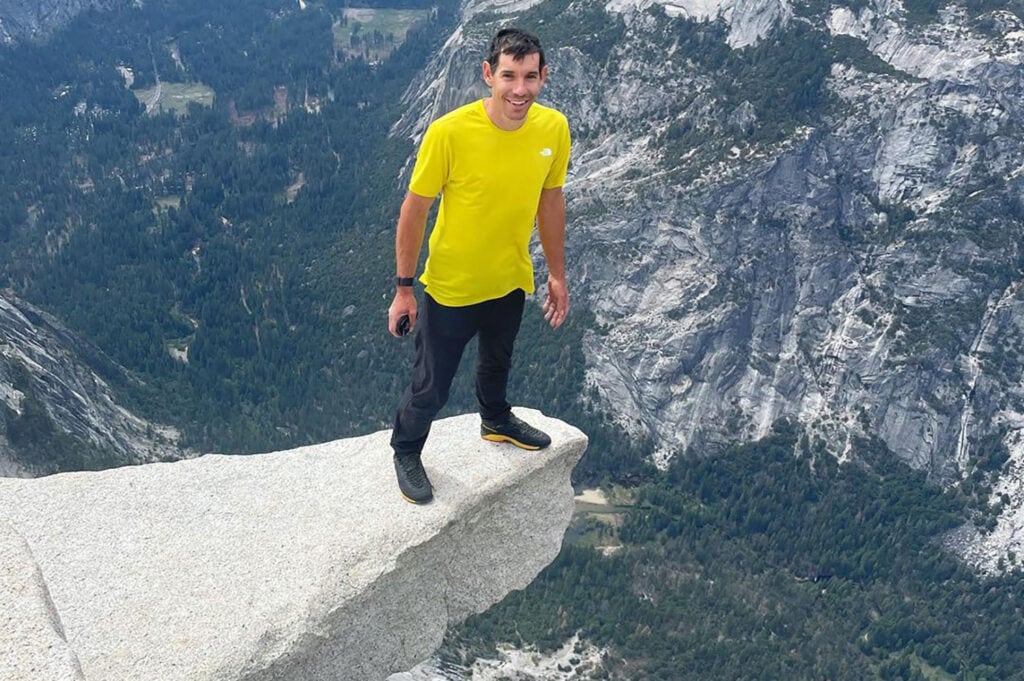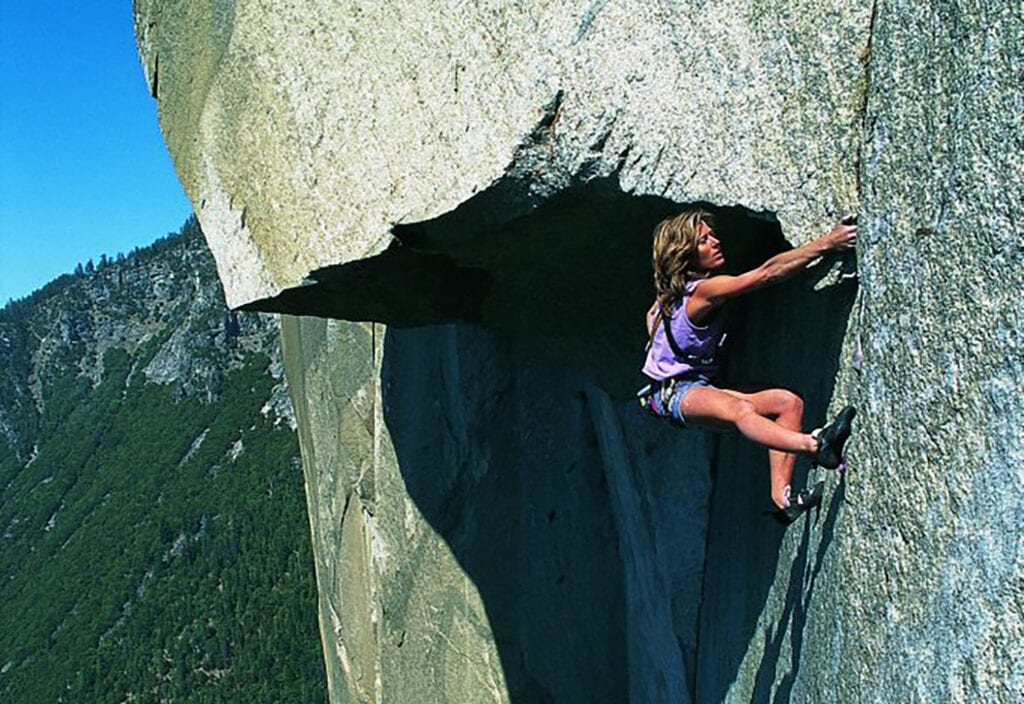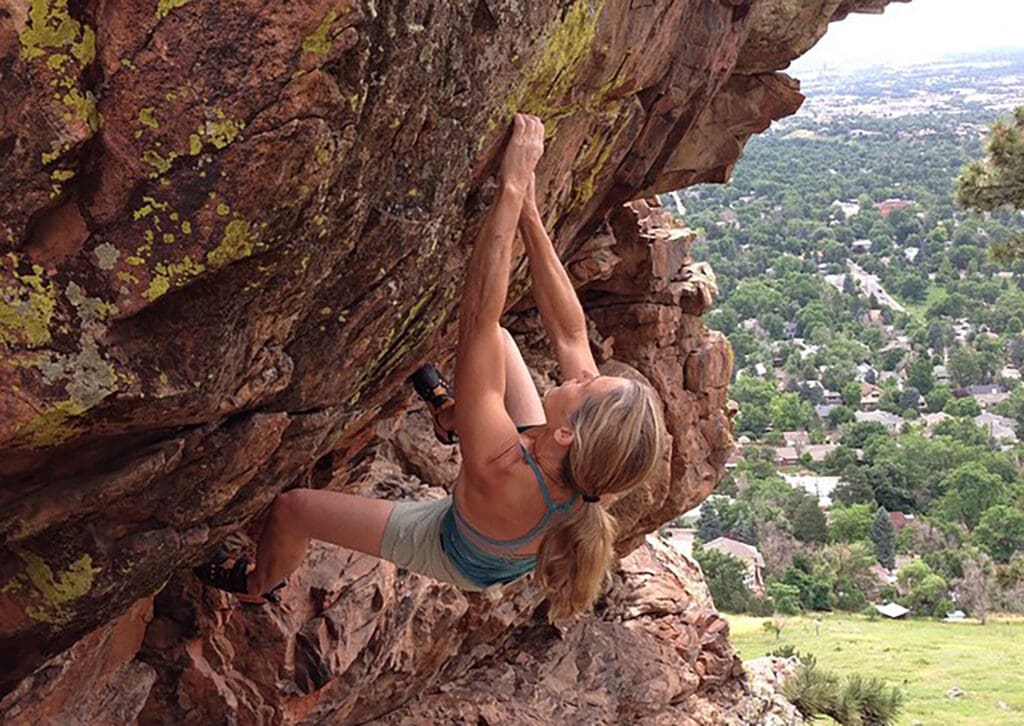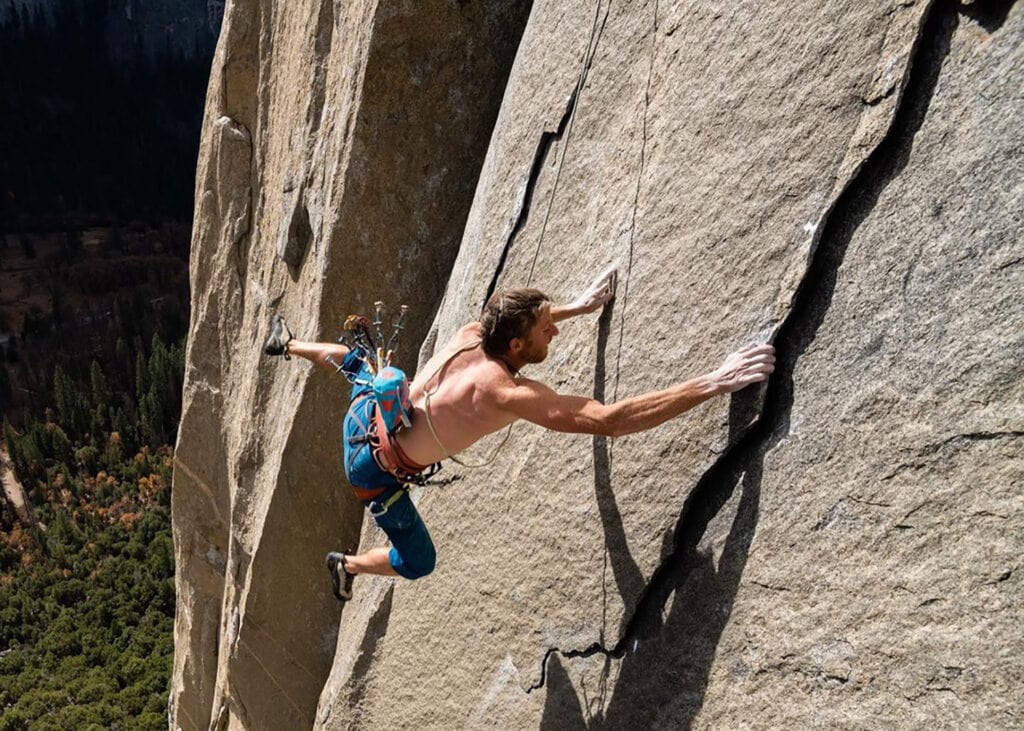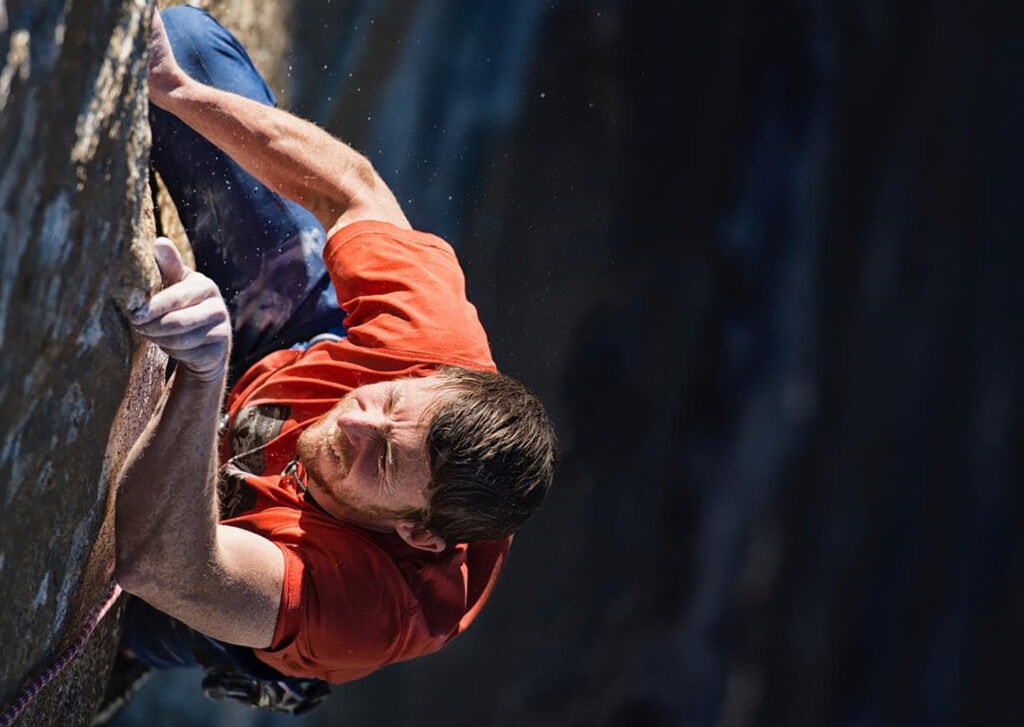9 Rock Climbing Books Every Climber Should Read (2024)

Rock climbing and mountaineering are pursuits that attract both driven, goal-oriented personalities as well as iconoclastic dreamers seeking an escape from the mundane.
That means the ranks of climbers are full of both writers and readers. Writers who want to document their routes, methods, and courageous exploits in the vertical world. And readers seeking inspiration for their next climbing project from one of their heroes or looking for new training techniques to boost their own performance to new levels.
As such, the history of climbing literature is long and diverse. In our list of the top books every climber should read, we have included several genres of writing, from training guides to memoirs of the climbing life from world-class climbers.
There’s also climbing history peppered throughout several of our selections. So much of climbing is about who has done what first, how they did it, and what the next step might be for future climbers that nearly all climbing stories include some historical perspective.
Enjoy our recommendations for the rock climbing books every climber should have on their shelves. We hope they inspire you to pursue ambitious new climbing goals and teach you how to gain the strength and skills to achieve them!
Overview
| Title | Author(s) | Type |
|---|---|---|
| Mountaineering: The Freedom of the Hills | The Mountaineers | Technique |
| How to Rock Climb | John Long and Bob Gaines | Technique |
| Training for Climbing: The Definitive Guide to Improving Your Performance | Eric Hörst | Training |
| The Rock Warrior’s Way: Mental Training for Climbers | Arno Ilgner | Training |
| Alone on the Wall | Alex Honnold (with David Roberts) | Autobiography |
| Climbing Free: My Life in the Vertical World | Lynn Hill (with Greg Child) | Autobiography |
| Camp 4: Recollections of a Yosemite Rockclimber | Steve Roper | Memoir |
| The Push: A Climber’s Journey of Endurance | Tommy Caldwell (with Kelly Cordes) | Autobiography |
| Accidents in North American Climbing (any year) | American Alpine Club | Technique, Prevention |
Mountaineering: The Freedom of the Hills – The Mountaineers
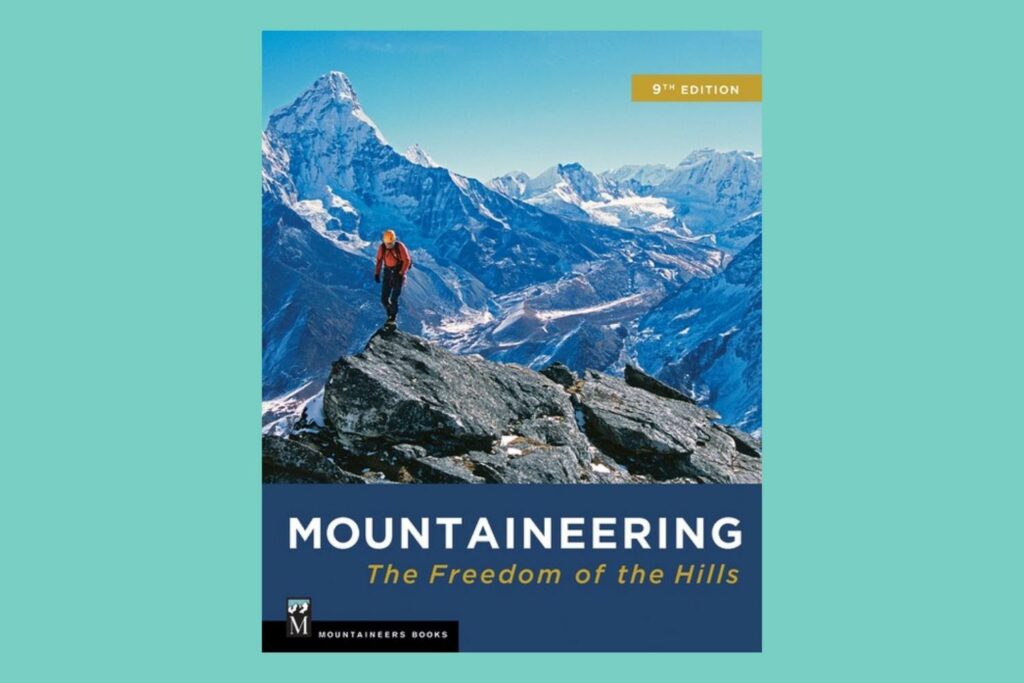
The Encyclopedia of Climbing Techniques
The essential instruction manual touches on the broad variety of skills needed to be a competent mountaineer. It covers everything from packing tips to rock climbing techniques. This book was first published in 1960 and has steadily evolved to remain a standard for climbers around the globe.
Now in its 9th edition, Freedom of the Hills has expanded and updated information on modern rock climbing gear and methods. Every section, from camping and trekking to glacier travel and alpine rescue, has been improved with updated text and photos.
The main sections of Mountaineering: The Freedom of the Hills are organized like this:
- Outdoor Fundamentals
- Climbing Fundamentals
- Rock Climbing
- Snow, Ice, and Alpine Climbing
- Leadership, Safety, and Rescue
- The Mountain Environment
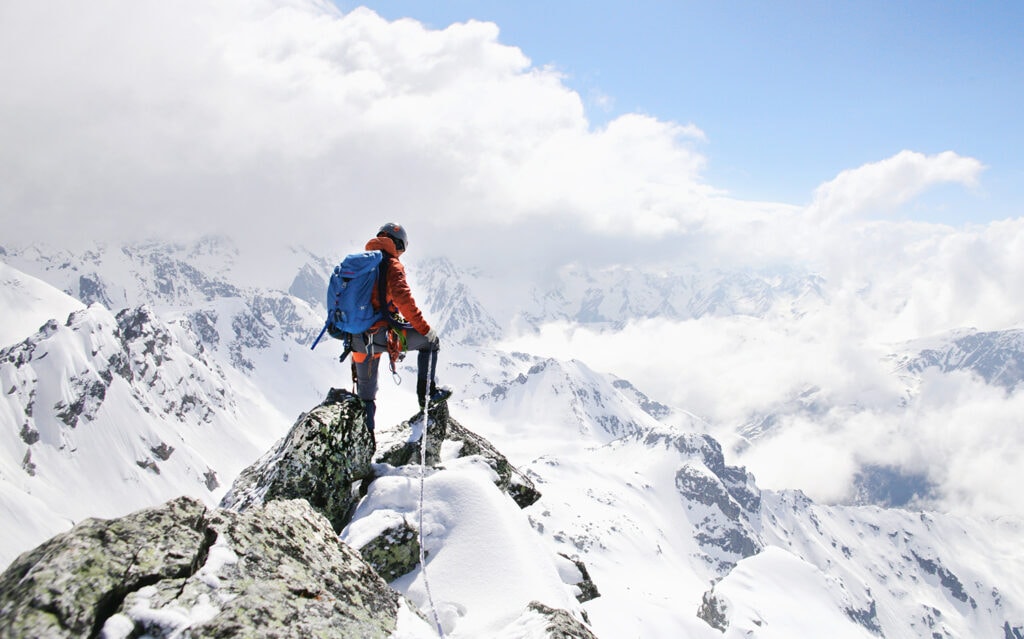
Who’s It for?
It’s still the best reference manual for people who want to climb everything from the local crag to 8,000-meter summits. No instruction manual can replace hands-on teaching from an experienced professional. However, Freedom of the Hills will get you the baseline knowledge to start conquering just about any challenge a rock climber might face.
About the Author
This book was originally written by a group of guides and climbers collectively called The Mountaineers of Seattle in the United States. However, it’s still reviewed and updated by a large committee of professional climbers, guides, and instructors to ensure the accuracy and relevance of its information.
How to Rock Climb – John Long and Bob Gaines

Rock Climbing Technique for Sport and Trad Climbers
Any climber who wants to improve their fundamental skills on rock should also study a dedicated manual focused solely on the craft of rock climbing. The 6th edition of this classic instructional book, published in 2022, shows you all the details of present-day rock climbing techniques and technology.
How to Rock Climb starts with an introduction to the knots and basic equipment needed for rock climbing, from dynamic ropes and belay devices to harnesses and carabiners. Then there are sections on different techniques for face climbing and crack climbing.
Then the authors spend a long portion of the book describing how to build rock climbing anchors properly. It also explains how different anchor systems work (and fail). This incredibly important information is presented in great detail, with step-by-step images showing contemporary methods and gear.
The following parts tell you the basics of belaying, top-roping, and rappelling safely. This practical guide wraps up with chapters on sport and traditional climbing, multipitch climbing, and how to manage risk-taking on the wall.
Who’s It for?
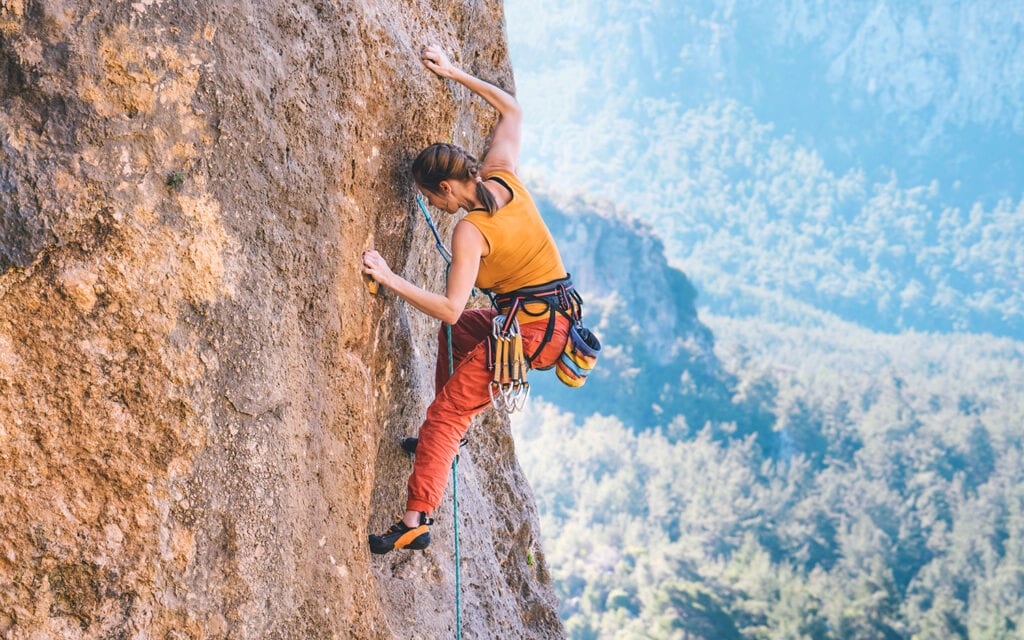
If you’re going to own just one instructional rock climbing book, it’s hard to go wrong with How to Rock Climb. Beginner and intermediate climbers can be assured that the practices described in this primer have been tested and validated by many thousands of climbers over the past decades. The new update also makes sure that this comprehensive book covers all the latest types of gear and protection.
About the Author
John Long was a Yosemite Stonemaster along with Lynn Hill and a groundbreaking big wall climber. He later became a respected author of several of the best rock climbing books on the fundamentals of climbing. Bob Gaines, his co-author on the 6th edition of How to Rock Climb, is a celebrated climbing instructor and writer in his own regard.
Training for Climbing: The Definitive Guide to Improving Your Performance – Eric Hörst

How to Improve Your Physical Climbing Performance
Another book with a long track record of success is Training for Climbing. Its 3rd edition comes with expanded material for building strength in the core, fingers, and flexor muscles. This book combines modern exercise science, climbing physiology, and practical experience. Its goal is to help climbers develop an individual training program tailored to their skill and ability level.
The first few chapters go over how to set goals, think about training, and work on the mental challenges posed by rock climbing. Then the book describes the unique physiological demands of rock climbing and which muscles are critical to climbing movements.
The following chapters discuss how to work out and train the most important muscle groups. Then, the author tells you how to put all of the training activities together to build an individual training plan that matches your goals.
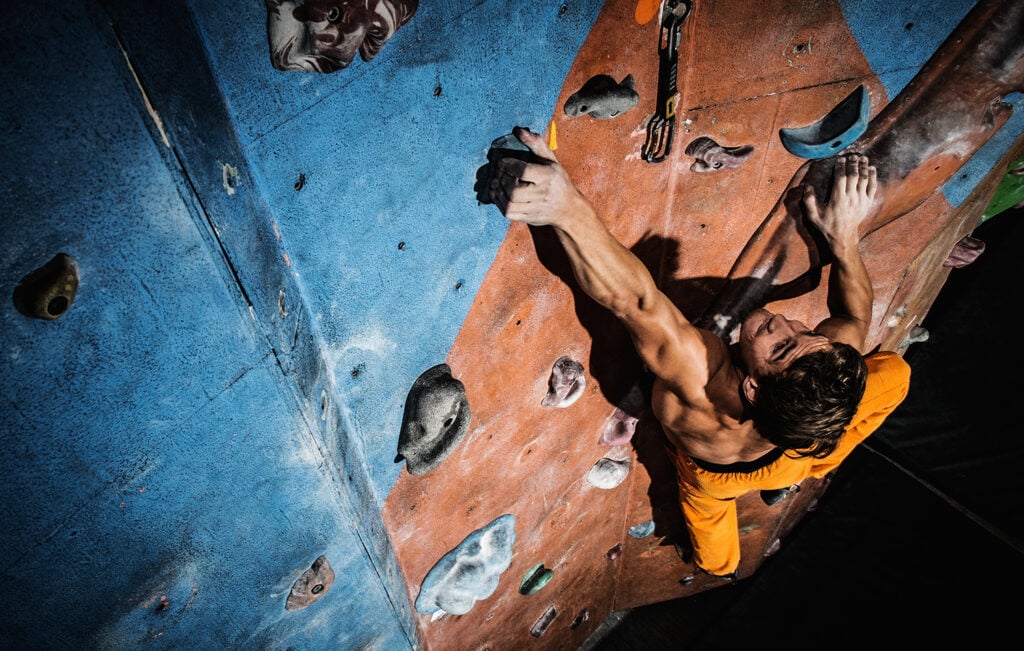
The final few chapters discuss training recovery, proper nutrition, and injury prevention. Training for Climbing leaves no stone unturned in its focus on optimizing your physical capabilities to reach peak performance.
Who’s It for?
Even though the first edition came out over 20 years ago, Training for Climbing continues to be one of the best rock climbing books. It’s suitable for climbers at all levels who want to move past their current plateaus using a proven system. Anyone looking for a structured approach to goal setting and achievement will benefit from it.
About the Author
Eric Hörst draws on his 40 years of climbing and training experience to create books and training programs dedicated to rock climbing performance. His other bestselling work, How to Climb 5.12, has also helped many climbers develop the strength and mental skills needed to push past their climbing limits to new heights.
The Rock Warrior’s Way: Mental Training for Climbers – Arno Ilgner
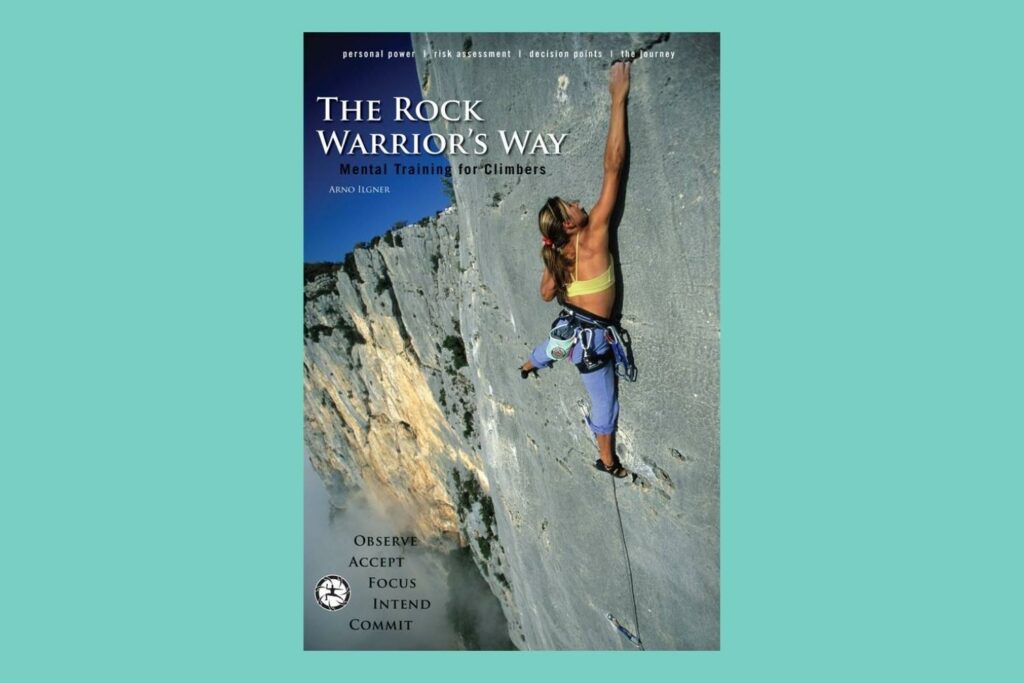
How to Build Up the Mental Aspects of Climbing
Just as most people need a dedicated physical training regimen to reach their highest climbing potential, we also need to work on the inner mental game to reach our best.
The Rock Warrior’s Way is all about that mental aspect. Although the title implies that climbing may be akin to a martial art, the tone of the book is more Zen than samurai.
In other words, the warrior’s way isn’t to aggressively attack your climbing goals. It’s about focusing on the process and taking intelligent risks. It’s not just “going for it” or trying to grit your teeth and ignore fear.
The chapters of the book have titles like “Life is Subtle” and “Listening,” but that doesn’t mean this book is all about philosophy. Each of these chapters has practical exercises to help you hone your attention and awareness on the path to optimal rock climbing performance.
For the self-coached climber, it’s helpful to get better insight into why you behave the way you do on the rock. The Rock Warrior’s Way is one of the best rock climbing books for that purpose.
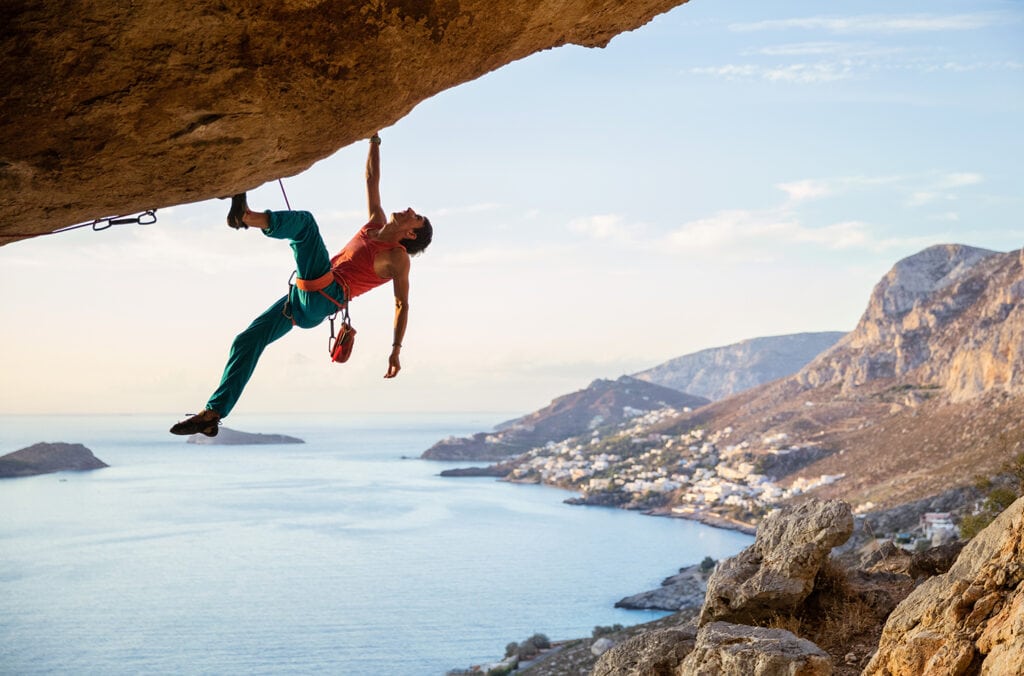
Who’s It for?
We recommend The Rock Warrior’s Way for beginner to advanced climbers who want to climb with less fear and feel more in control of their thoughts. It doesn’t take a lot of time and effort to begin seeing results from Ilgner’s methods. Even elite climbers have made gains from his training!
About the Author
The author of this book, Arno Ilgner, started climbing in the 1970s in Tennessee. He became one of North America’s leading first ascensionists on hard multi-pitch routes. Arno developed this training guide based on his climbing experience and years-long study of mental training and the warrior philosophies of different cultures.
Alone on the Wall – Alex Honnold (with David Roberts)

Memoir of the World’s Best Free Soloist
Alone on the Wall revolves around Alex Honnold’s groundbreaking free solo climb on Yosemite’s El Capitan in 2017. It was documented in the Oscar-winning film Free Solo. This book features an account of his life leading up to the historical climb and his thoughts during and after the big event. There are also interviews and quotes from other climbers and acquaintances to give some outside perspective on Honnold’s endeavors.
This combination memoir-journalistic report is dominated by Honnold’s daring solo on El Cap’s Freerider route. He climbed this 3,300-foot wall of sheer granite in a few hours without a climbing partner or a rope. This wasn’t the most difficult unroped solo ever, and it’s not the hardest route on El Capitan (see Tommy Caldwell’s Dawn Wall further down). Still, it’s extremely difficult and most likely the longest.
Honnold’s insights into his life and this climb, in particular, aren’t especially revealing. But many climbers will still be interested in his opinions and preparation techniques when it comes to taking risks and climbing hard.
The climbing stories in Alone on the Wall aren’t extremely dramatic or thrilling, considering the extreme nature of free soloing. That’s likely a reflection of Honnold’s low-key approach to expressing emotion and his unnatural ability to focus without fear.
Who’s It for?
This book is not among the best rock climbing books when it comes to style or literary value. Nonetheless, its subject matter does have great historical importance in the climbing community. Alone on the Wall may also be of particular interest to fans of Honnold, climbers who are fascinated or curious about soloing, and members of the general public who saw the movie and thought, “Why in the world would someone do that?”
About the Author
Alex Honnold needs little introduction for most climbers. His soloing exploits are well documented. He has received even more exposure in recent years with his team expeditions to remote locales to create new routes and pursue scientific discoveries.
Climbing Free: My Life in the Vertical World – Lynn Hill (with Greg Child)
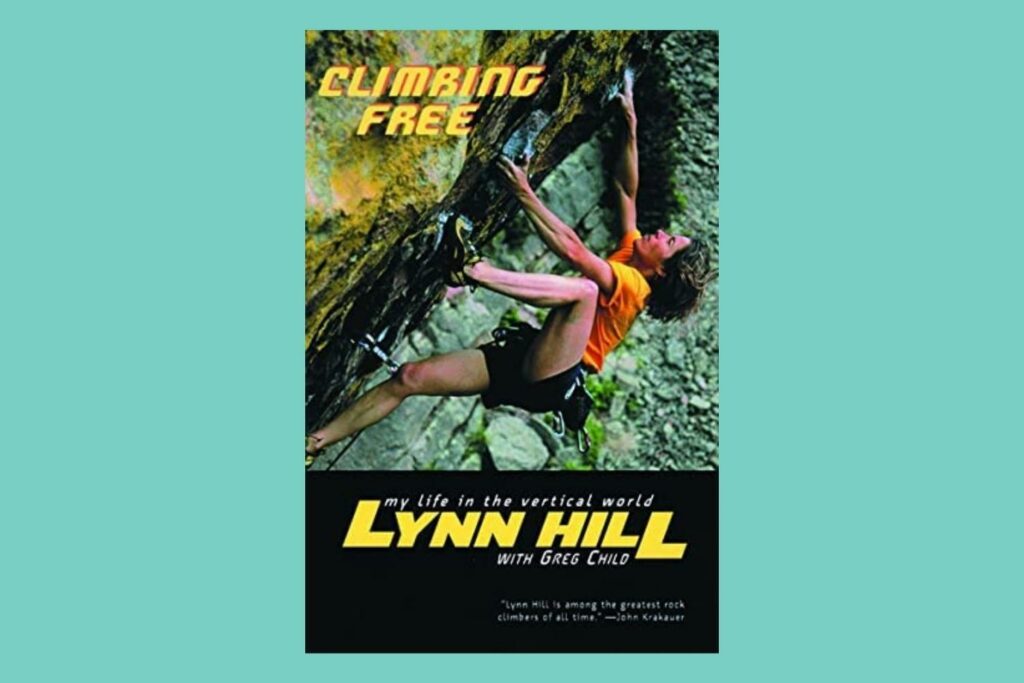
The Woman on Top of El Capitan
An action-packed memoir from the first person (man or woman) to free climb The Nose route in Yosemite, Climbing Free: My Life in the Vertical World tells the story of one of the world’s most accomplished climbers.
Among American female climbers in the 1980s through the ’90s, nobody could match Hill. She climbed as hard as anyone, setting the world’s standard for free climbing when she sent The Nose in 1993. A year later, she upped the ante by climbing the route in a single day. It wasn’t repeated by anyone else for 10 years, which ranks Hill’s efforts as some of the most astounding feats ever.
Aside from her historic ascents of The Nose, Climbing Free details Hill’s early climbing years, her competition career, and a scary 80-foot fall that she miraculously walked away from. She also talks about her personal relationships with men climbers and the discrimination she faced along the way to proving herself.
Who’s It for?
This book is required reading for climbing history buffs, with insider tales on Camp 4 and the climbing culture that continued to evolve there after the first wave of pioneers. Hill has a unique and uplifting perspective in telling an inspiring story for people of any gender, climbers and non-climbers.
About the Author
Lynn Hill started climbing in California with the infamous Stonemasters in the 1970s. She pushed new limits and setting standards at Yosemite, Joshua Tree, and other areas in the western U.S. Her initiative, imagination, and rock skills proved that the difference in abilities between genders in climbing is essentially meaningless.
Camp 4: Recollections of a Yosemite Rockclimber – Steve Roper

The Valley During the Golden Age
In some ways, the North American climbing culture that exploded in Yosemite National Park in the 1960s spread throughout the world. From gear to climbing slang, many things we currently use were invented or perfected during this time.
We still talk about the bold climbers of that period, too, as they did so many first ascents with primitive gear and unknowns around every corner. Camp 4: Recollections of a Yosemite Rockclimber is a first-hand account of those years.
The author witnessed or participated in many first-time ascents of Yosemite big walls and routes that are now famous. The other characters in the book include big wall pioneers like Yvon Chouinard, Royal Robbins, and Warren Harding.
Camp 4: Recollections of a Yosemite Rockclimber isn’t just a memoir. It makes some attempt to cover the entire history of climbing in the Valley, starting in the 1930s. However, the era of the ’60s through the early ’70s accounts for more than half the book if that’s what you’re interested in.
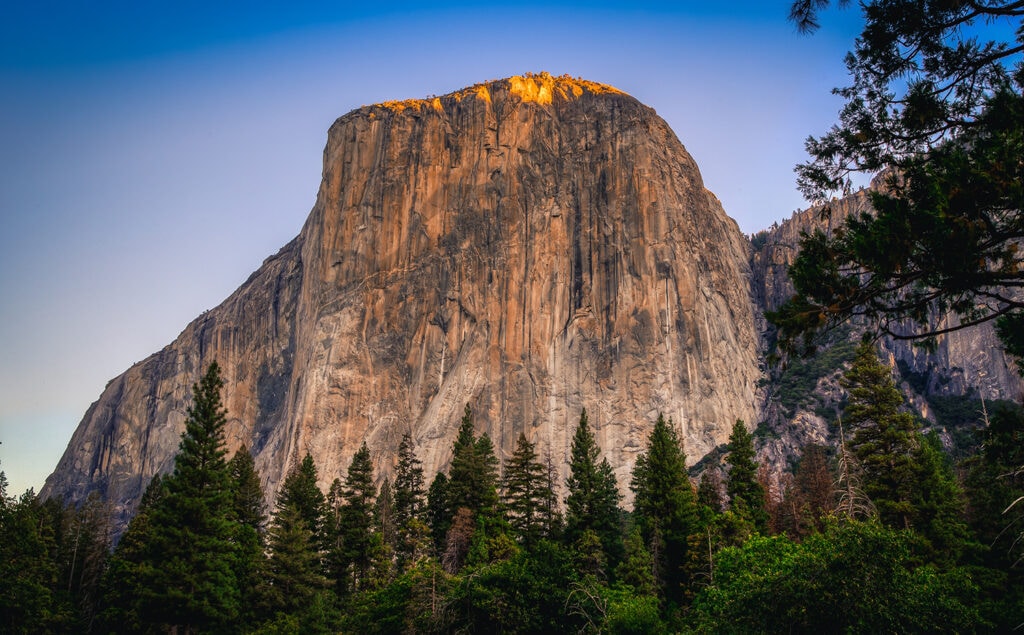
Who’s It for?
The tales in this volume range from terrifying to inspiring to hilarious. It’s perfect if you’re looking for a good story to pass the time. Camp 4 also contains a large number of photos that aren’t published elsewhere, which is almost worth the cost alone. Anyone interested in Yosemite’s climbing history should definitely have this on hand.
About the Author
The author of this book, Steve Roper, also co-authored the out-of-print classic Fifty Classic Climbs of North America along with Allen Steck. Aside from these two well-regarded books, Roper has published a number of fine guide books covering Yosemite and climbing routes throughout the Sierra Mountains of California.
The Push: A Climber’s Journey of Endurance – Tommy Caldwell (with Kelly Cordes)
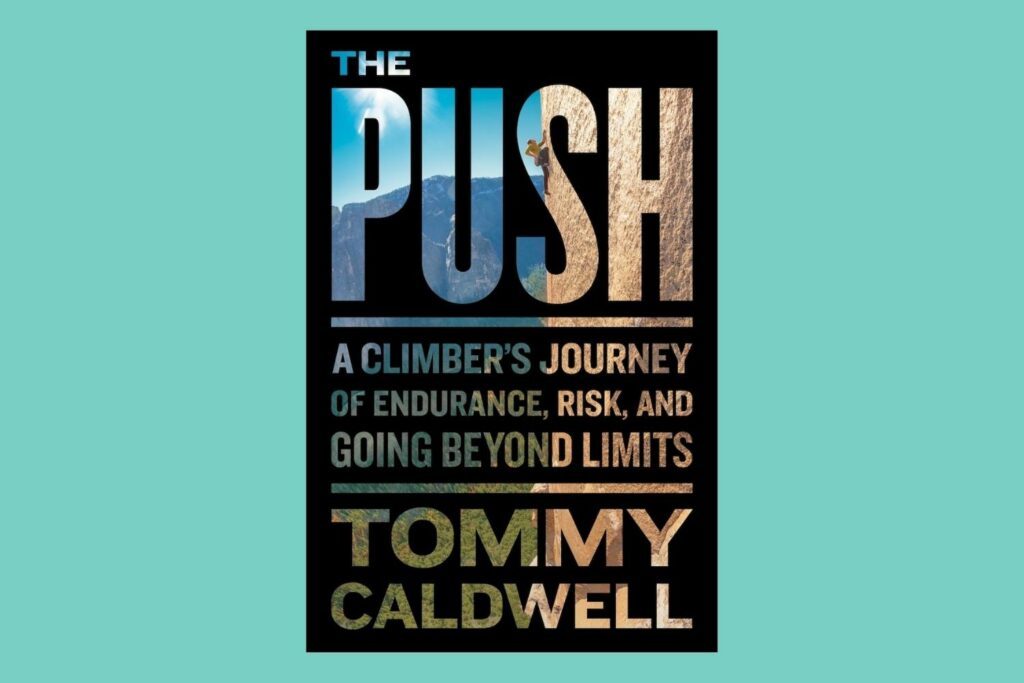
Modern Master of Big Wall Free Climbing
The central story of this book is Tommy Caldwell‘s 2015 first ascent of The Dawn Wall in Yosemite Valley, California, along with Kevin Jorgeson. Also captured on film in the amazing The Dawn Wall, this event was the culmination of years of work. It became the most difficult big wall free climb ever completed at 5.14c/8c+.
In addition to Caldwell’s experiences on climbing trips and new routes like The Dawn Wall, The Push offers honest insights into the methods and motivations of a top professional climber. Caldwell also delves into personal history regarding his father, his first wife (pro-climber Beth Rodden), and his current family.
A momentous section of The Push talks about an exploring trip Caldwell took to Kyrgyzstan in 2000 with Rodden and two other climbers. The four were kidnapped by militants and held at gunpoint for six days before escaping. The escape involved a physical altercation between Tommy Caldwell and one of his captors that affected him deeply, as he initially thought he killed the young rebel soldier.
So, the title of The Push: A Climber’s Journey of Endurance has many meanings. It’s about Caldwell’s ability to focus on the Dawn Wall objective after years of trying and failing. It also focuses on his success in overcoming external and internal difficulties to get to the pinnacle of his sport.
Who’s It for?
This book will satisfy those curious about the life of a professionally sponsored climber driven more by internal compulsions than money or fame. There’s a lot of material about adventures and amazing achievements, but also a lot of seasoned perspectives on life and what it takes to survive as a human in this world.
About the Author
Tommy Caldwell has seen and done almost everything as a climber except for high-altitude mountaineering. From teenage comp phenom to global big wall adventurer and perhaps the best American trad climber of all time, Caldwell is the definition of a living legend.
Accidents in North American Climbing (any year) – American Alpine Club
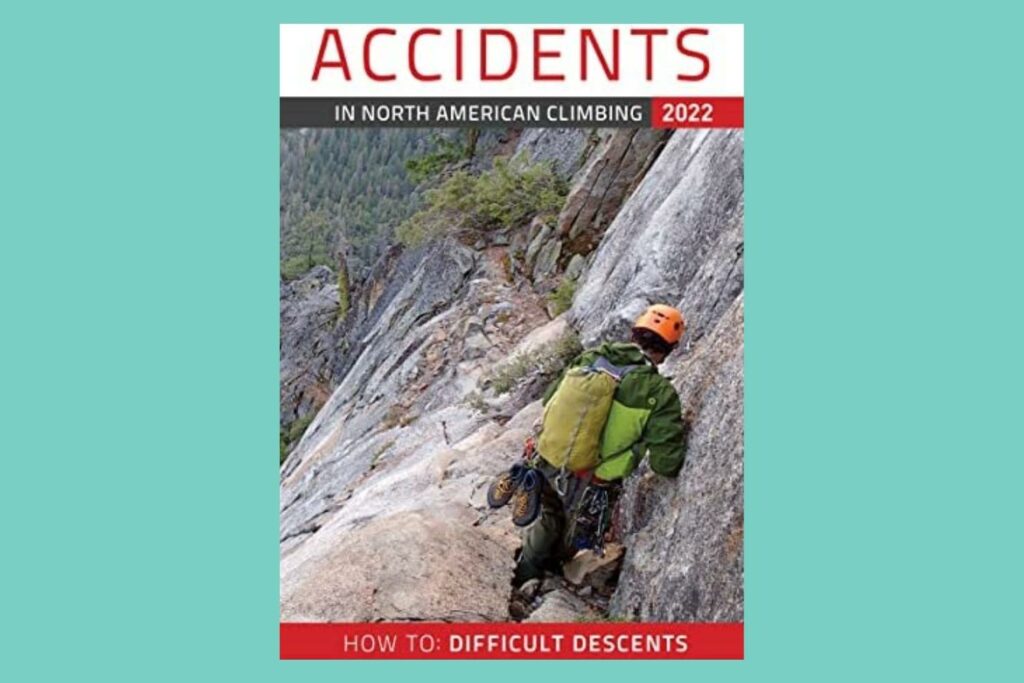
Learning What Not to Do When Rock Climbing
Beginner rock climbers may be scared, but they probably aren’t scared of the right things. Often accidents happen when climbers encounter a new situation that they’ve never practiced or mentally prepared for.
If you want to know how climbing mishaps actually happen, it’s important to understand what leads to other people’s accidents. The American Alpine Club publishes a print and digital edition annually of all the significant accidents that have been reported by climbers, search and rescue organizations, and other parties.
The incident reports are categorized by state and listed chronologically. The majority of accidents aren’t fatal and are published with the cooperation of the climbers involved. Many of the reports are partially or fully written by members of the unlucky party.
This inside perspective on what climbers are thinking and doing when bad things happen can be extremely insightful. And reading about others’ hard-earned life lessons so that you don’t have to repeat them might prove to be the most valuable time you ever spent.
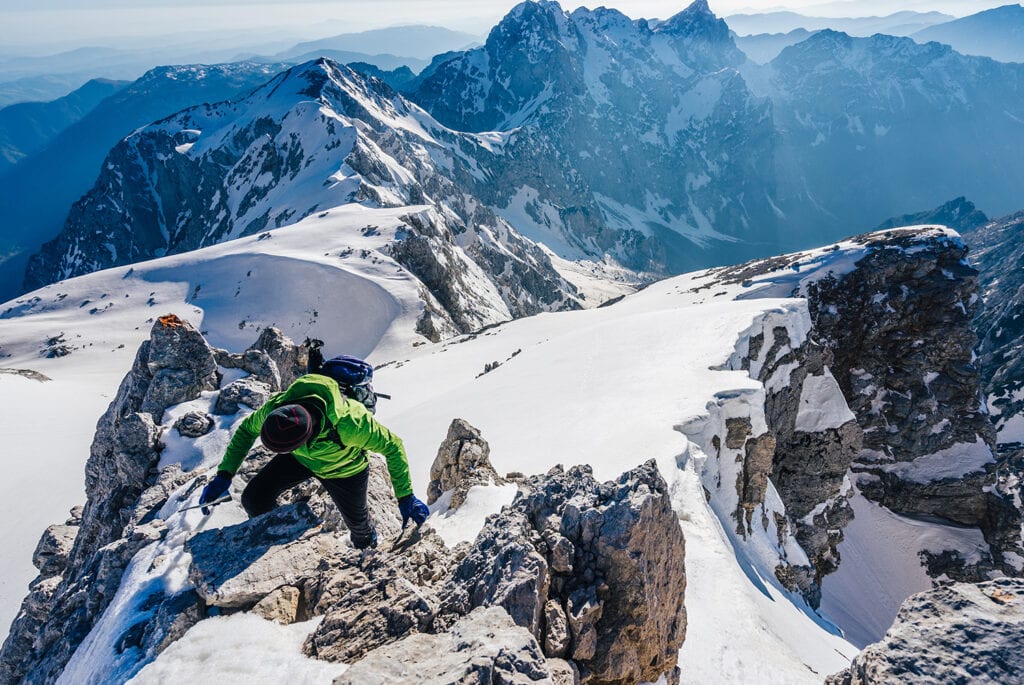
Who’s It for?
Every climber interested in preserving their own and their partners’ lives. There are technical details of improper and dangerous gear use, along with accounts of poor decision-making that led to accidents, that you won’t find anywhere else.
About the Author
Accidents in North American Mountaineering is an annual volume compiled by editors and volunteers with the American Alpine Club. The individual reports are created from written records and interviews with climbers, rescue team members, and others with first-hand knowledge of the incidents.
Conclusion
Read the books on this list to become a better climber and to better understand the lure of climbing and why we pursue it. They may not all be classics, but they’ll form the foundation of a good rock climbing education and provide some entertainment along the way.

